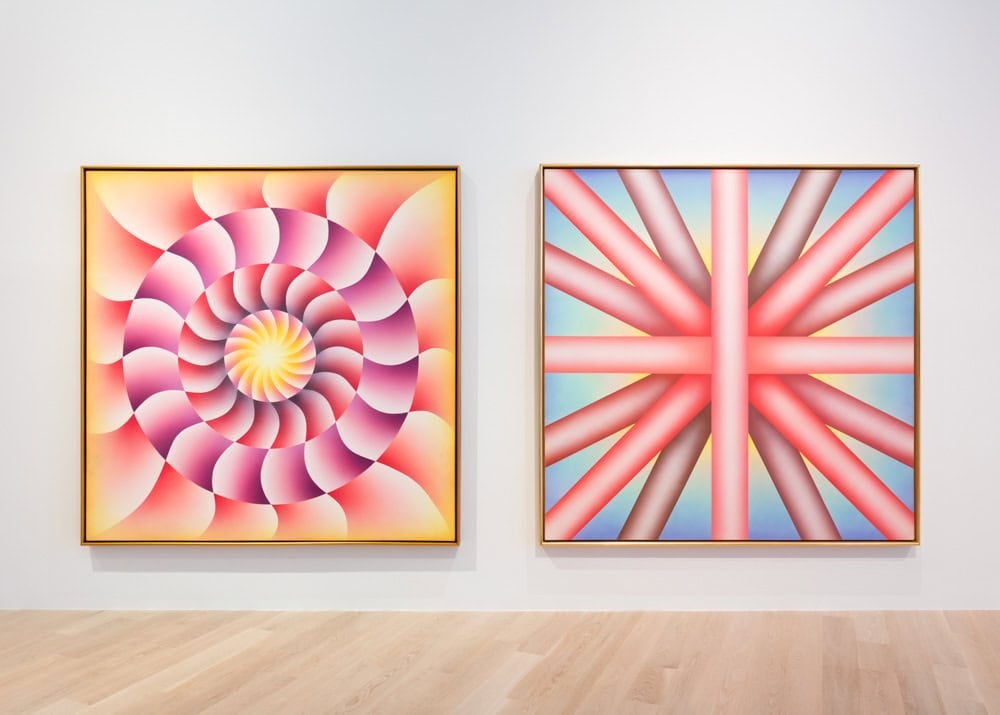
“Feminist art is all the stages of a woman giving birth to herself.” Those are the words scrawled in red at the top of Judy Chicago’s 1977 lithograph What Is Feminist Art? Down the middle of the lithograph are small hieroglyphs representing the Venus of Willendorf, a person giving birth, and other symbols characteristic of Chicago’s early feminist artwork. Although this work isn’t in “Judy Chicago: A Reckoning,” a survey of Chicago’s work at the Institute of Contemporary Art, Miami (ICA Miami), it provides an apt message for understanding the life and work of a woman whose name is synonymous with feminist art.
As Chicago’s practice grew and changed—from her site-specific performances, to her early minimalist work, to her abstract iconography, to her feminist figuration—feminist theory also evolved. As much as Chicago said she was motivated by the exclusion of women from art history, she perpetuated that omission by failing to recognize the sexuality on Sojourner Truth’s plate, which—as writer and activist Alice Walker pointed out—lacked the vulvar imagery of the others: “It occurred to me that perhaps white women feminists, no less than white women generally, cannot imagine that black women have vaginas.” Chicago’s attempt to spotlight women in history fell short in its acknowledgement of race as a fundamental part of the female experience. In another example of the work’s racial and ethnic oversights, Estelle Chacon, who had seen the artwork with a group from the National Women’s Political Caucus, called for a boycott of The Dinner Party for its exclusion of “pre-conquest New World heroines.” Thus, Chicago was still adherent to the notion that there was a universal female subject to gender oppression and worthy of honoring at the dinner party. “We cast the dialogue incorrectly in the seventies. We cast it around gender, and we were also simplistic about the nature of identity. Identity is multiple,” Chicago later said. Chicago’s use of female volunteers has also been a point of contention, as critics have viewed it more as exploitation than collaboration.
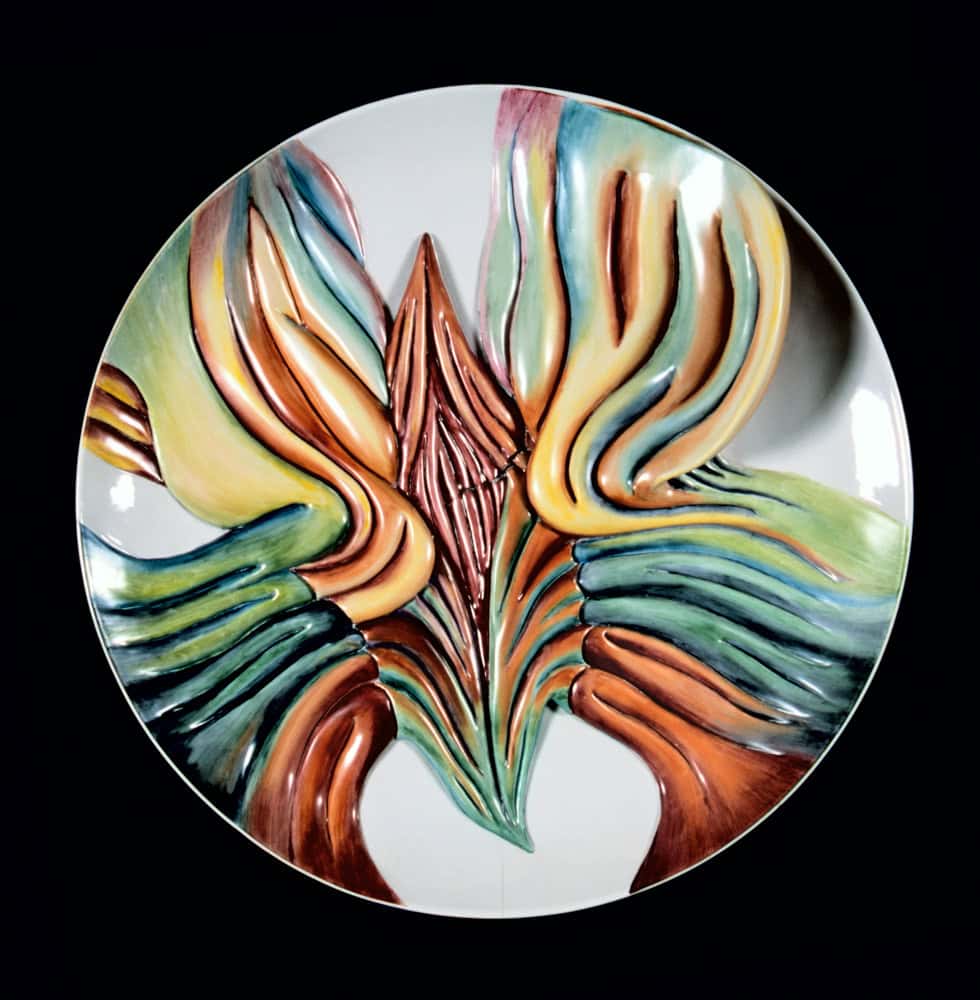
Some of Chicago’s test plates for The Dinner Party, which was created with the help of many volunteers, appear in the ICA Miami exhibition, along with porcelain work from the same time. The inclusion of the test plates could be seen as a comment on the exclusions, imperfections, and incompleteness of The Dinner Party’s racial and labor politic. But the work that greets viewers as they enter the second-floor exhibition space is Chicago’s earlier minimalist sculpture and painting. Many of Chicago’s larger artworks had to be destroyed when they went unsold and she couldn’t afford to store them. Sunset Squares (1965/2018), consisting of four pastel-colored hollow squares of varying sizes, was one such artwork that Chicago recreated it for this exhibition. Situated at different angles to one another, the squares are serious but inviting—like windows to the rest of Chicago’s artwork. Bigamy Hood, one of three car hoods on display, also shows Chicago’s early exploration of shape and color. In the artwork, Chicago takes an object that’s traditionally associated with masculinity and uses it as her canvas, imbuing the phallic and yonic images sprayed onto the hood with automotive lacquer with the vitality and motion of various yellows, blues, and pinks. (Chicago went to auto body school to learn to spray paint and to prove her “seriousness to the male art world.”)
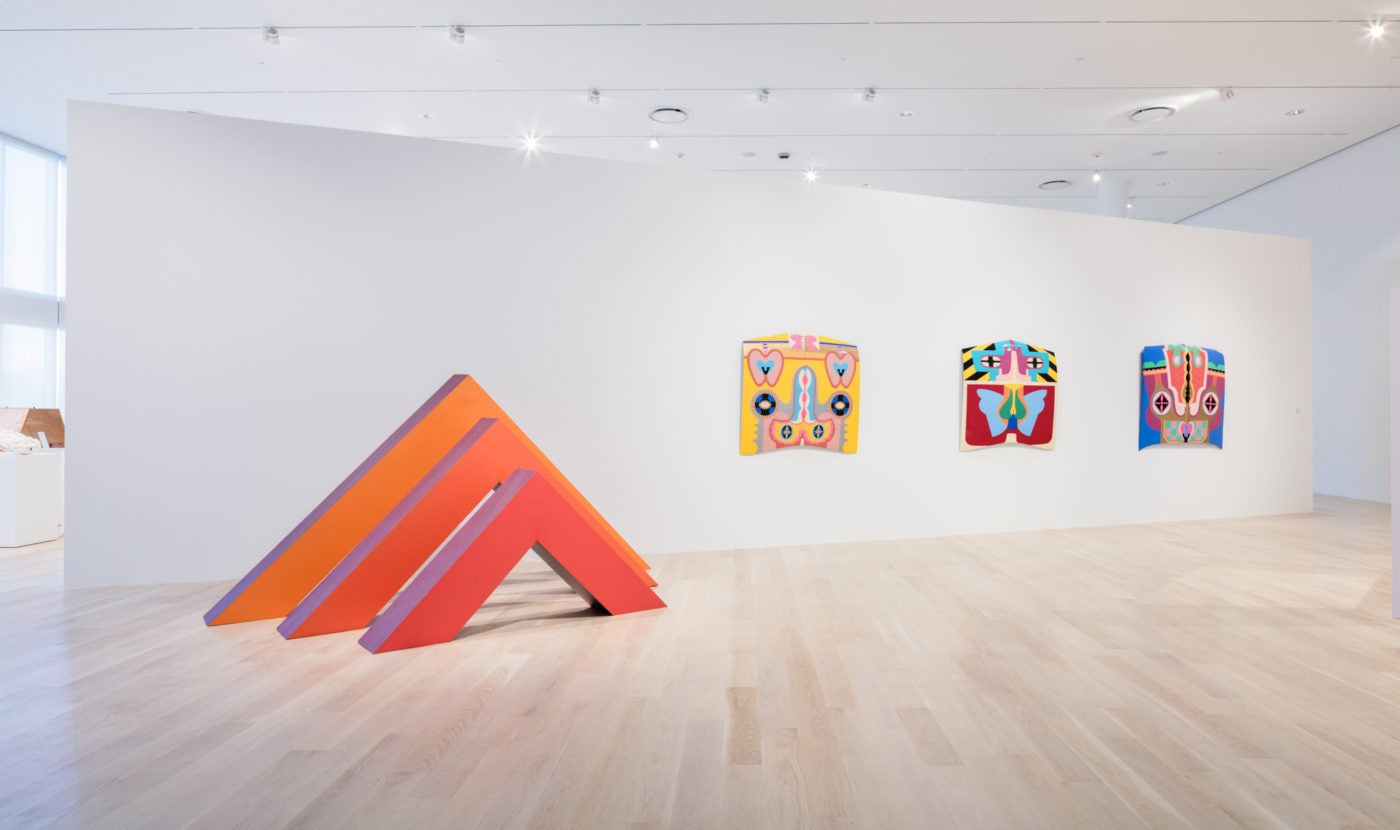
But as the exhibition enters the early 1970s, Chicago’s work gains more depth: literally, through the way she uses color to create the impression of falling slowly into her abstract worlds; and figuratively, in how she uses content and composition to tell her own, subjective story of womanhood. The transition from her minimalist works to Heaven is For White Men Only, Let It All Hang Out, and the Reincarnation Triptych(all from 1973) feels like more of an unfettering than a rerouting in the course of her work. Gender and sexuality were present as subtext in her earlier work, but they moved to the forefront as her practice became more reflective of her personal experiences and awakening to world history. In the sprayed acrylic painting Heaven is For White Men Only, Chicago layers fleshy pink and brown bars on top of one another, reminiscent of the ubiquitous stock photo depicting people of different races extending their arms together to signify unity despite diversity. Reincarnation Triptych pulls no punches in its overt homages to women who inspired Chicago, revealing Chicago’s transformed commitment to centering women’s experiences. She wrote short tributes to women in history along the border of each painting. For instance, the text on Virginia Woolf from Reincarnation Triptych reads, “Virginia Woolf—First woman to forge a female form language in literature. Conscious to the point of agony, she controlled her anger, yet did not emerge undamaged from her struggle to balance the excesses of masculine culture with feminine values.”
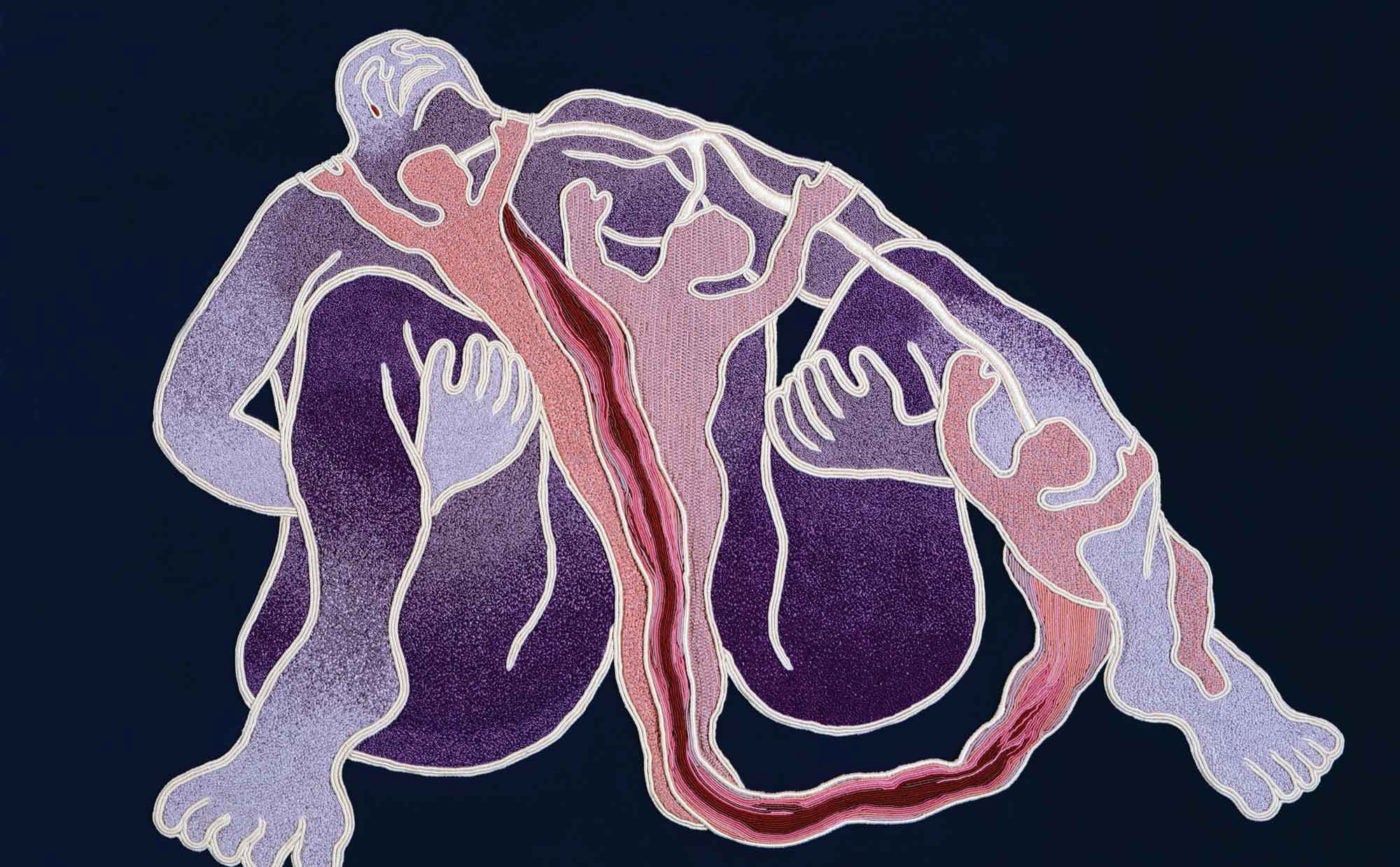
The visceral but delicate artworks displayed from Birth Project (1980-1985)—which Chicago started right after The Dinner Party was completed—build on the artist’s dedication to uncovering the absence of lived female experiences in the art historical record. Around 150 needle-workers collaborated with her on more than 80 panels which depict the emotional and physical process of childbirth. In Birth Tear/Tear(1982), a person appears to split in half as she grips her legs and throws her head back, her mouth open in agony. This brutal scene is softened by the beautiful, topographic embroidery on wine-red silk. The embroidery, needlepoint, macramé, and weaving throughout the panels in Birth Project are stunning, with billowing lines and alluring colors. As the major turning point in the exhibition’s narrative—when Chicago moved from abstract to figurative work—these works demonstrate many notions of womanhood Chicago piled into her work to reinforce the necessity of female inclusion. Each Birth Project panel bears the weight of socially constructed ideas about gender, the invisible but ubiquitous experience of birth, and Chicago’s belief in the importance of childbirth within the shared female consciousness.
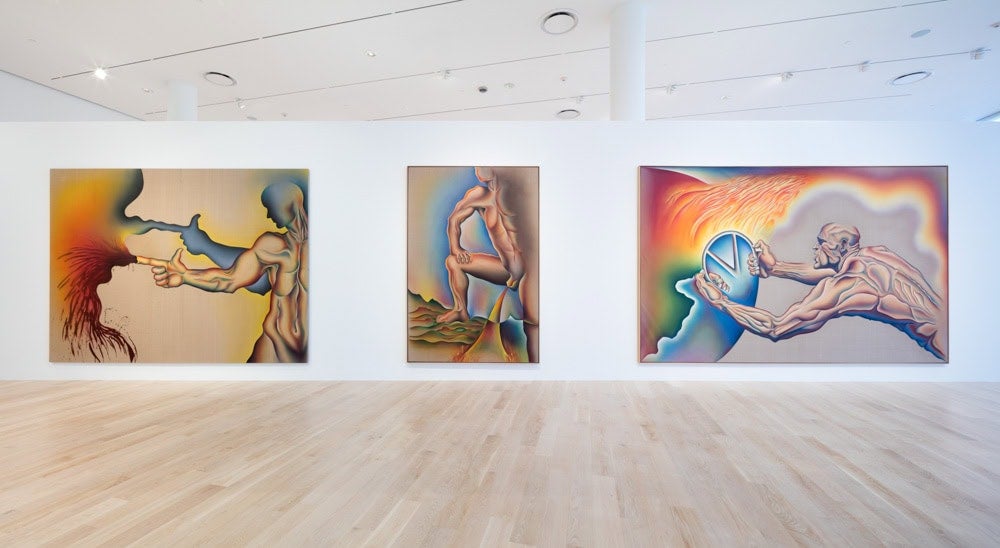
The works on view from Chicago’s PowerPlay series (1982-1987), explore masculinity in a way that feels too on the nose in our present moment. In Pissing on Nature (1984), a larger-than-life person urinates on a shrunken landscape, an implicit comment on the destructiveness of male ego and an explicit statement on the degradation of nature by male political and social figures. In light of Americans’ acceptance of sexual violence from male leaders and disregard for environmental conservation, it is easy to be desensitized to Chicago’s overt criticism of male personal and political violence and abuse of power. Yet, there is a sense of hopelessness in the series’ immediate relevancy. Autobiography of a Year, works on paper Chicago created in the wake of a critically panned series about of the Holocaust, brings a welcome note of introspection after the moralizing of the three PowerPlay works. Ending the exhibition here perfectly express Chicago’s penchant for self-assessment, exploration, and honest interrogation. And this authentic sincerity and embrace of failure is what allowed her work to endure over the last fifty years. Even when Chicago doesn’t quite hit the mark in form or in message, she’s not afraid to give birth to herself again.
“Judy Chicago: A Reckoning” is on view at the Institute of Contemporary Art, Miami, until April 21, 2019.




